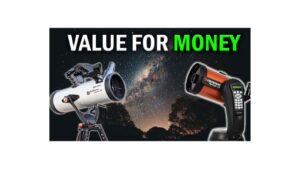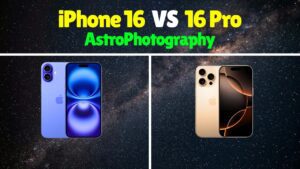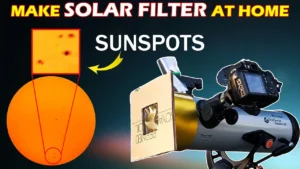
If you are a reader of our site, then you already know that the aperture is the most important part of a telescope. Previously we explained the telescope’s focal length & focal ratio.
The importance of an aperture is so much that most telescope manufacturers name the telescope according to the aperture size. For example, NexStar 8SE. 8 is the aperture size of that telescope. The size of the aperture will determine “How clear an image of an object you can see?”. A bigger aperture will give you a clearer & sharper image.
The aperture of a camera
It is the same as the aperture of a camera. A professional camera will always give you a better image than a camera of your Smartphone. The phone’s post-processing might give you a good quality image. But a big aperture professional camera will collect more light and the photos clicked with this camera will always be better than a small-sized camera on your phone. The big aperture camera will have more depth & details to the photo.
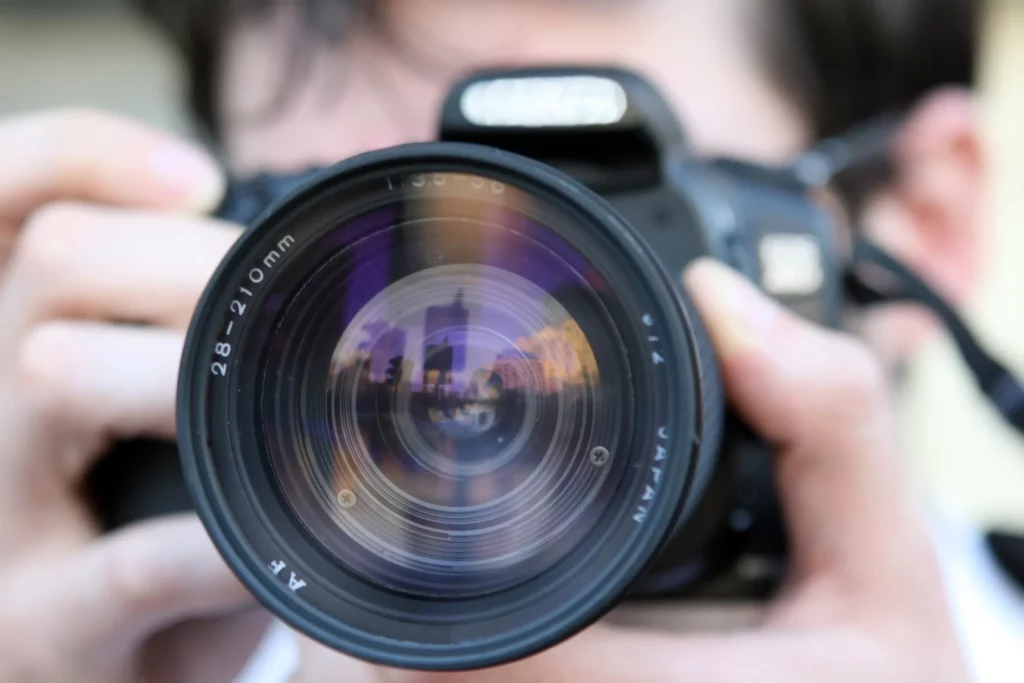
The telescope aperture formula
Now, you might be wondering, I must always buy a big aperture telescope. The answer is yes, but before doing that you should consider some things. A larger aperture has an advantage, in that it can collect more light. If it collects more light, then you will get to see more details of an object.
For example, a small aperture will show you a dim image of Saturn. But when you see Saturn through a bigger aperture, then it will show you a bright image with a clear view of the Encke division of its rings.
When an aperture collects light, different types of telescopes transfer that light differently. If you don’t know what are the different types of telescopes, then read this article.
When the refractor telescope collects light, then it is transferred to the focal point also known as the eyepiece. Similarly, when the reflector telescope collects light then the light is transferred to the secondary mirror and then to the eyepiece.
If you know the focal length & focal ratio of a telescope then you can calculate the Aperture size of that telescope and vice-versa. The formula is as below.
Aperture(A) = \frac{Focal \: length \:of \:a\:telescope\:(L) }{Focal\:ratio\:of \:the\:telescope\:(f)}There is always a loss of light in each mirror. If you take a refractor and a reflector of the same aperture size then you will get better views from the refractor telescope compared to the reflector one.
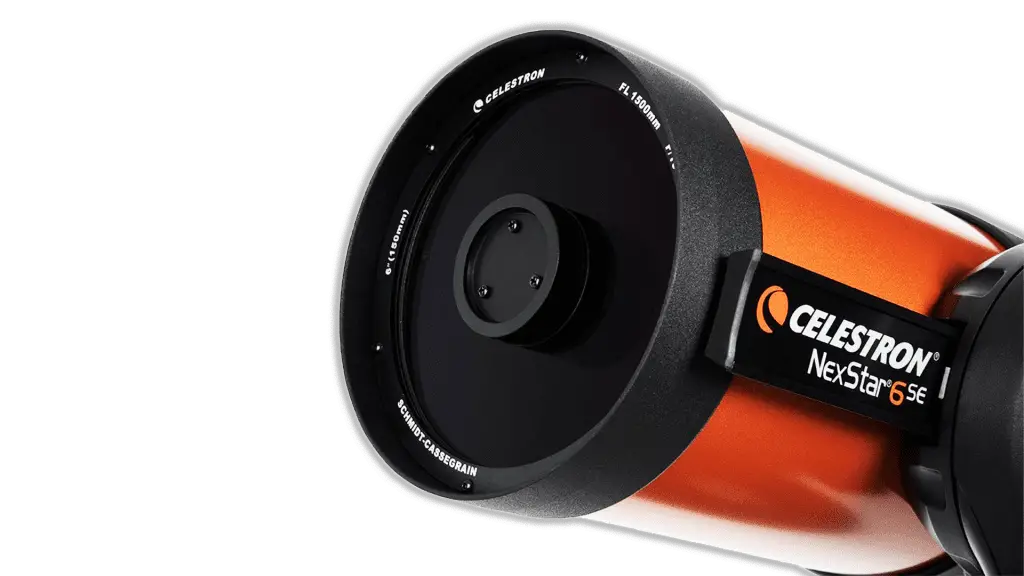
Telescope aperture & magnification
Another factor determined by the aperture size of the telescope is the magnification. If your telescope has a small aperture then its magnification limit will not be much. But if it has a larger aperture then you can achieve more magnification giving you more details. The magnification of a telescope formula is given below.
Magnification(M) = \frac{Focal \: length \:of \:a\:telescope\:(L) }{Focal\:length\:of \:the\:eyepiece\:(l)}Our eyes do the same job as an aperture of a telescope. The aperture of our eyes is just 7mm. So telescope which has a 100mm aperture is much more powerful and can see many times more than the human eyes.
Should you just buy a bigger aperture telescope?
Before buying a bigger aperture telescope you should consider some things.
Cost
Apertures are made up of the lens. These lenses need to be highly efficient to absorb maximum light. Manufacturing this lens is costly & as the aperture is the most important part of the telescope. So manufacturing a bigger highly efficient aperture is very costly. Therefore, as the aperture size increases the price of the telescope also increases. If you go and buy the biggest aperture telescope then it will cost you a lot of money.
Mobility
You will not be able to easily move a big aperture telescope compared to a small aperture one. Usually, the optical tube of bigger aperture telescopes is heavy. So to support such heavy tube the telescope has solid mounts which are also heavy. And when you have a bigger aperture telescope then most likely you are also interested in astrophotography. So you will also carry the equipment for that as well. If you travel a lot to different stargazing locations then mobility is one of the important factors you should consider.
Skies in your region
The best result you will get from your telescope is when you have clear skies. If you live in an area, where light pollution is high. Then most of your bigger aperture telescope’s potential will be wasted. So before making a purchase do check out the pollution levels in your region/city. If you frequently go out for stargazing to clear sky locations, then pollution is not an issue for you.
What level of an astronomer you are?
Your level of astronomy or more importantly you can say your interest in pursuing this hobby is important. Always remember “the best telescope is the one which you use often”. If you are a beginner then buying an expensive telescope will not make much sense. As you will not know how much you will be interested in this hobby. What if you buy an expensive telescope in excitement and after a month or two you lose interest in this hobby? Then all the money you spent to buy this expensive telescope is kind of wasted. So as a beginner you should keep your expenses minimum until you figure out your own interest levels. So, you should go for an aperture of a maximum 6-inch or below. If you are buying a telescope for kids then an aperture up to 100mm will be sufficient.
What is the best aperture size which will fit almost all the criteria?
The answer is that 6 to 8-inch aperture size is the best for most people. Pricewise, the telescopes in this aperture range are in the medium range. They give excellent views of an object. If you are a beginner and you start with a 6-inch telescope the quality of images you will see from them will get you excited to learn more about astronomy & stargazing. These telescopes in this aperture range are not too heavy. So moving these telescopes to different stargazing locations is much easier when you compare with much bigger aperture telescopes.
If you want to do astrophotography then 6-inch is the minimum aperture you require to get excellent results. Whether you just want to do stargazing or astrophotography, before buying a telescope one more factor you should consider is the focal length of that telescope. We have explained everything about the focal length in this video, so do check it out.
So overall, a telescope’s aperture is the most important fact you should consider while buying a telescope according to your needs. We have mentioned some good aperture telescopes in this article. Do check them out.
We hope you learned everything about the telescope’s aperture. If you want to know more about stargazing and astronomy then check out other articles on this site & also check out our YouTube channel.

